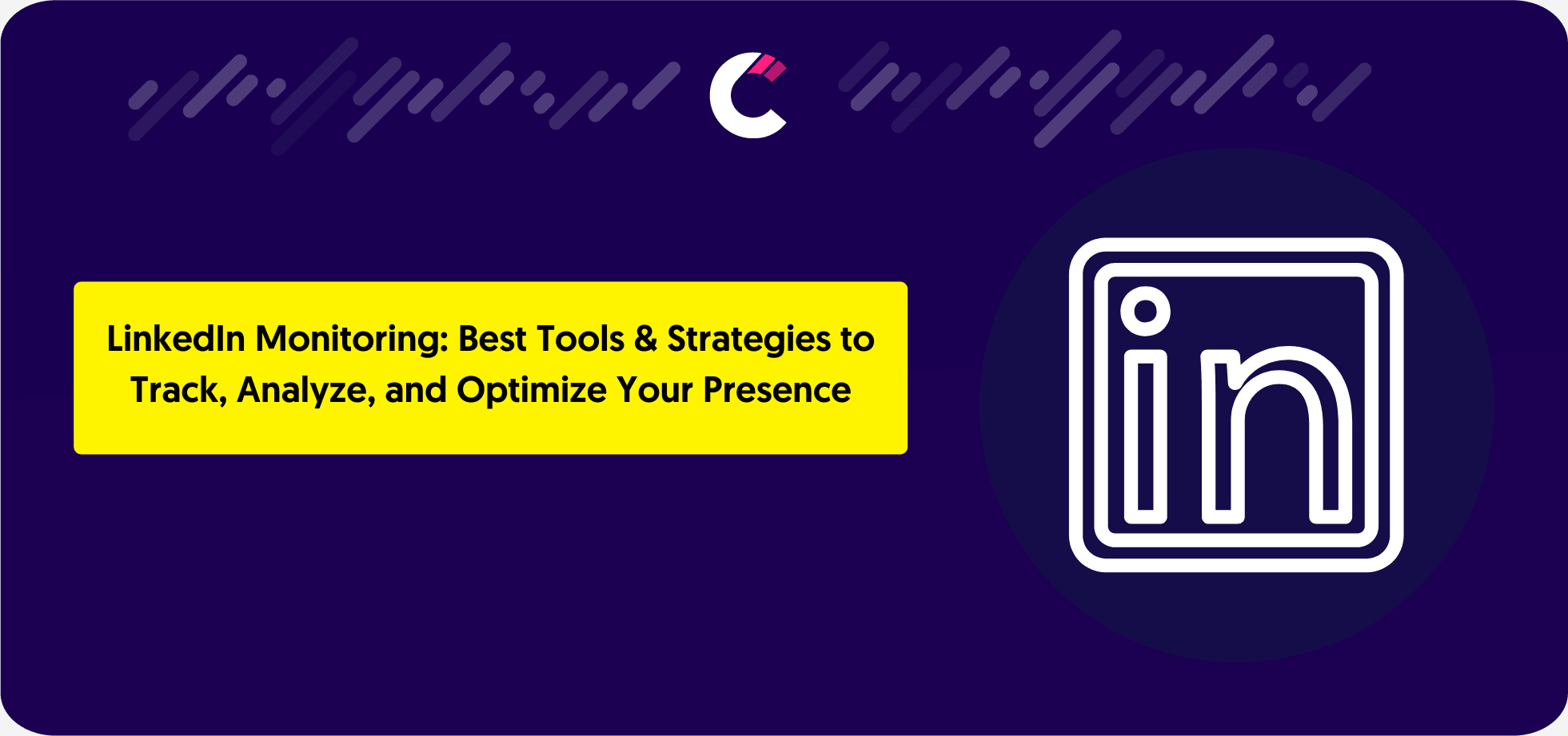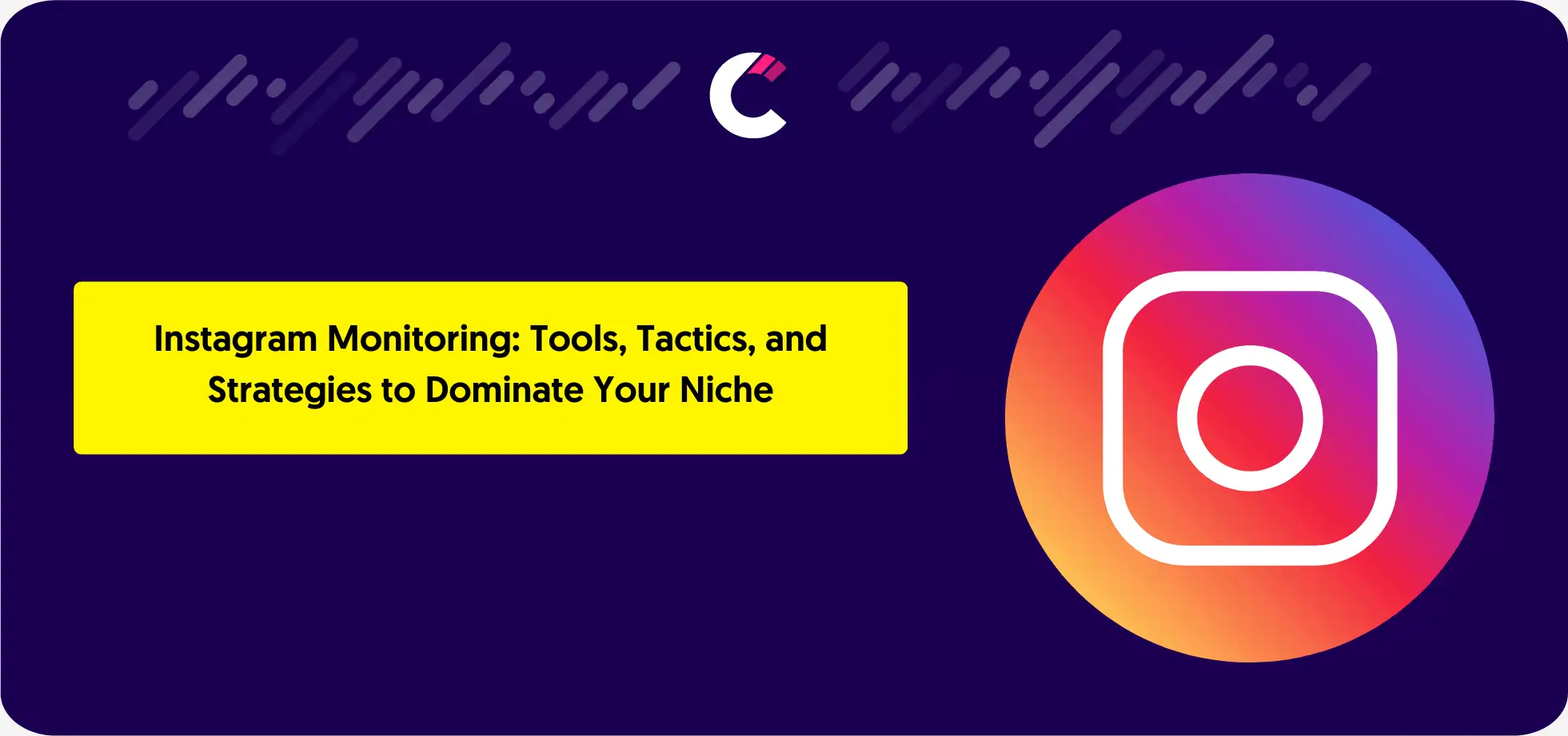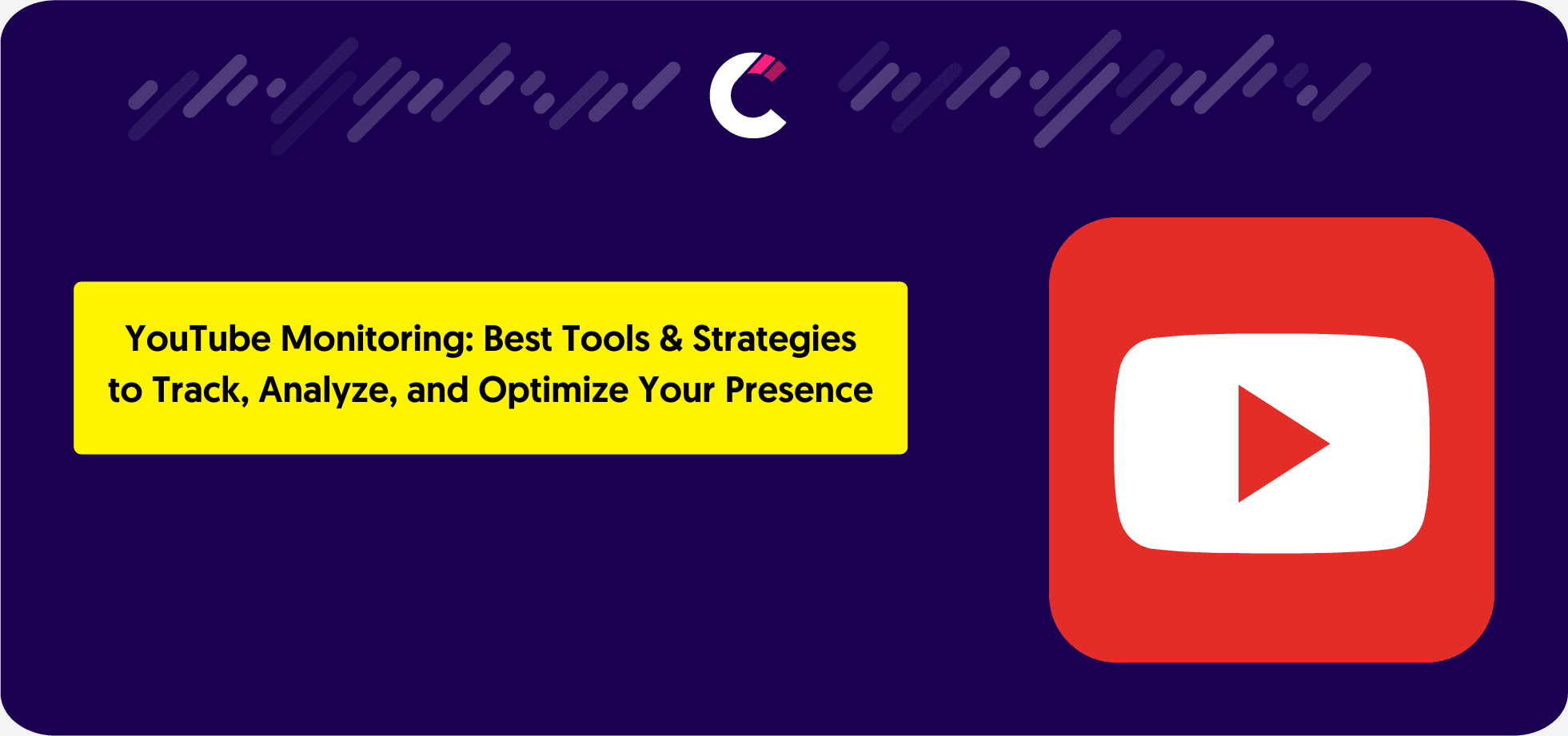Everyone wants a bigger slice of the online traffic pie, but how do you get it without starting from scratch? Here’s the secret: you can actually steal traffic from your competitors—but not in the way you might think. It’s not about copying their strategies or sneaky shortcuts. Instead, it’s about analyzing what your competitors are doing right, identifying the gaps, and leveraging those insights to drive more traffic to your own website.
Picture this: If your competitors are attracting thousands of visitors, wouldn’t it make sense to figure out how they’re doing it, and then do it better? That’s where this strategy comes in. It’s all about using data and smart tactics to boost your traffic, increase your online presence, and ultimately, outshine your competition.
Is Stealing Competitors’ Traffic the Right Strategy for You?
Before you rush into stealing traffic from your competitors, it’s important to ask yourself: is this the right strategy for your business? While the idea of tapping into your competitors’ success sounds appealing, it’s essential to consider both the benefits and the potential drawbacks.
On the plus side, analyzing your competitors can give you valuable insights into their most successful tactics. You can discover which keywords are driving the most traffic to their sites, what kind of content their audience loves, and even which backlinks are boosting their authority. Armed with this information, you can strategically position your own content to attract a similar audience, or better yet, offer something more valuable.
However, there’s a catch—this process takes time. You won’t see instant results, and trying to replicate your competitors’ exact strategy can lead to burnout. Plus, you need to stay on the right side of the law and ethics. The key here is not to plagiarize or use black-hat techniques. Instead, focus on improving upon what your competitors have done. Offer more value, create better content, and provide a user experience that stands out.
In short, stealing traffic can be a powerful tool, but it’s only effective when done strategically and ethically. Be prepared to put in the effort, and always prioritize improving rather than copying.
How to Steal Traffic from Your Competitors: 5 Proven Methods
Now that we’ve established that stealing traffic from your competitors can be a smart strategy, let’s dive into the five proven methods you can use to make it happen. These tactics aren’t about cutting corners—they’re about learning from your competitors, improving on their strategies, and standing out in a way that draws more visitors to your site.
1. Identify Competitors' Top Traffic-Generating Keywords
One of the first steps in stealing traffic from your competitors is identifying the keywords that are driving the most traffic to their websites. This isn’t about guesswork; there are powerful tools available to help you uncover exactly which keywords are ranking for your competitors.
Competitors App offers a fantastic way to track your competitors’ digital strategies and pinpoint exactly which keywords are driving the most traffic to their sites. By using this tool, you can quickly identify valuable keywords that you can target for your own content.
Once you have this information, don’t just replicate what your competitors are doing—use it to your advantage. Improve upon their content by making it more informative, engaging, or comprehensive. That’s how you can capture some of their traffic and draw visitors to your site instead.
2. Create High-Quality Content Around Competitors' Keywords
- Identify keywords: After discovering your competitors’ top traffic-generating keywords, it’s time to create content based on them.
- Don’t just copy—improve: Instead of simply replicating their content, aim to offer something better. Add more value, depth, and clearer explanations.
- User intent: Make sure your content aligns with what users are searching for, answering their questions comprehensively and engagingly.
- Engagement is key: Focus on creating content that’s not only informative but also keeps users engaged longer. The more time they spend on your site, the better for your rankings.
3. Leverage Your Competitors’ Backlinks to Drive Traffic
- Backlinks matter: Backlinks play a huge role in boosting your website’s authority and driving traffic.
- Find your competitors’ backlinks: Use tools like Competitors App to see where your competitors are getting their backlinks.
- Reach out to those sources: Once you identify valuable backlinks, contact those sites with your own valuable content. Aim to offer something better to encourage them to link to you.
- Earn authority: By gaining the same backlinks your competitors have, you can improve your website’s authority and boost your traffic.
4. Improve Your Website’s Speed and Design to Outperform Competitors
- Website speed: A fast website keeps visitors engaged and reduces bounce rates. If your competitors’ websites are slow, this is your opportunity to stand out.
- Mobile-friendly design: Ensure your website is responsive, making it easy to use across all devices. Mobile-friendly sites tend to rank better in search engines.
- User experience: A sleek, intuitive design helps visitors find what they need quickly. The easier your site is to navigate, the more likely visitors will stay and convert.
- Faster websites = better rankings: Search engines prioritize fast-loading websites. By improving your website’s performance, you’re also improving your chances of outranking competitors.
5. Target Referral Traffic and Social Media to Steal Traffic
- Referral traffic: Build relationships with high-authority websites in your industry. Secure links from blogs, forums, and news outlets to drive traffic to your site.
- Focus on social media: If your competitors aren’t fully utilizing platforms like Twitter, Instagram, and Facebook, there’s an opportunity for you to fill that gap.
- Create shareable content: Craft content that’s designed to be shared on social media. The more your content resonates, the more likely it is to be shared by your audience.
- Engage with your audience: Regularly interact with followers and participate in relevant conversations to boost your visibility and attract new visitors.
The Best Tools for Monitoring Competitors’ Traffic
To effectively steal traffic from your competitors, you need the right tools to track their performance, uncover their strategies, and stay one step ahead. Here are some of the top tools that can help you monitor your competitors’ traffic and analyze their digital strategies:
Competitors App
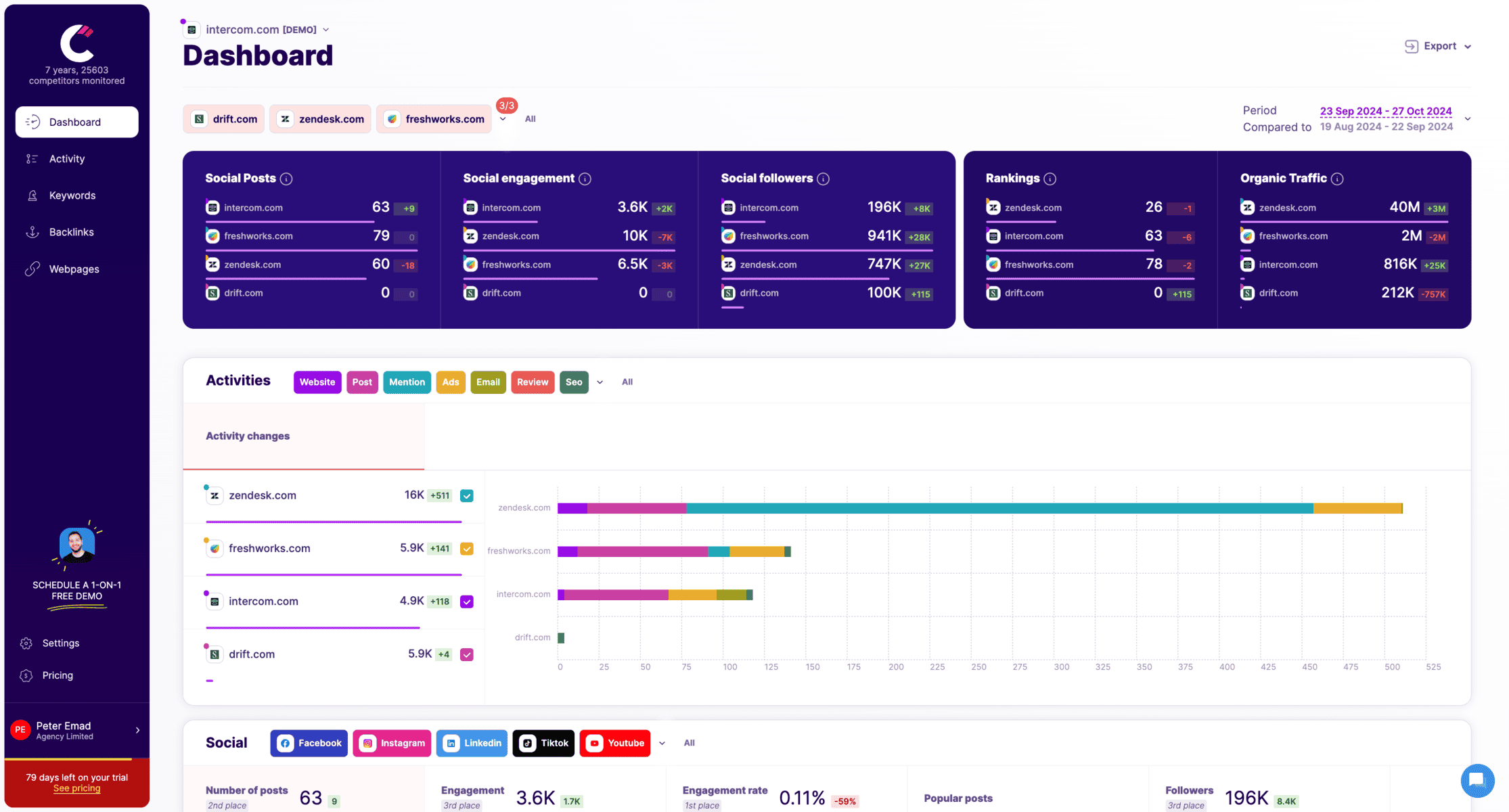
Competitor analysis is a cornerstone of successful product marketing, and Competitors App excels in providing businesses with detailed insights into their rivals’ strategies. This tool monitors competitor activity across websites, social media, and email campaigns, helping you identify trends and adjust your tactics accordingly.
- Key Features:
- Tracks updates on competitors’ websites and blogs.
- Monitors social media activities and engagement.
- Analyzes email marketing strategies from competitors.
- Generates regular reports with actionable insights.
- Advantages:
- Easy to use with automated tracking.
- Saves time on manual competitor research.
- Helps refine your marketing strategies with detailed reports.
- Disadvantages:
- Alerts can be overwhelming if not fine-tuned.
- Lacks integration with broader marketing tools.
- Pricing: Starting at $19.99/month, with higher tiers offering more features.
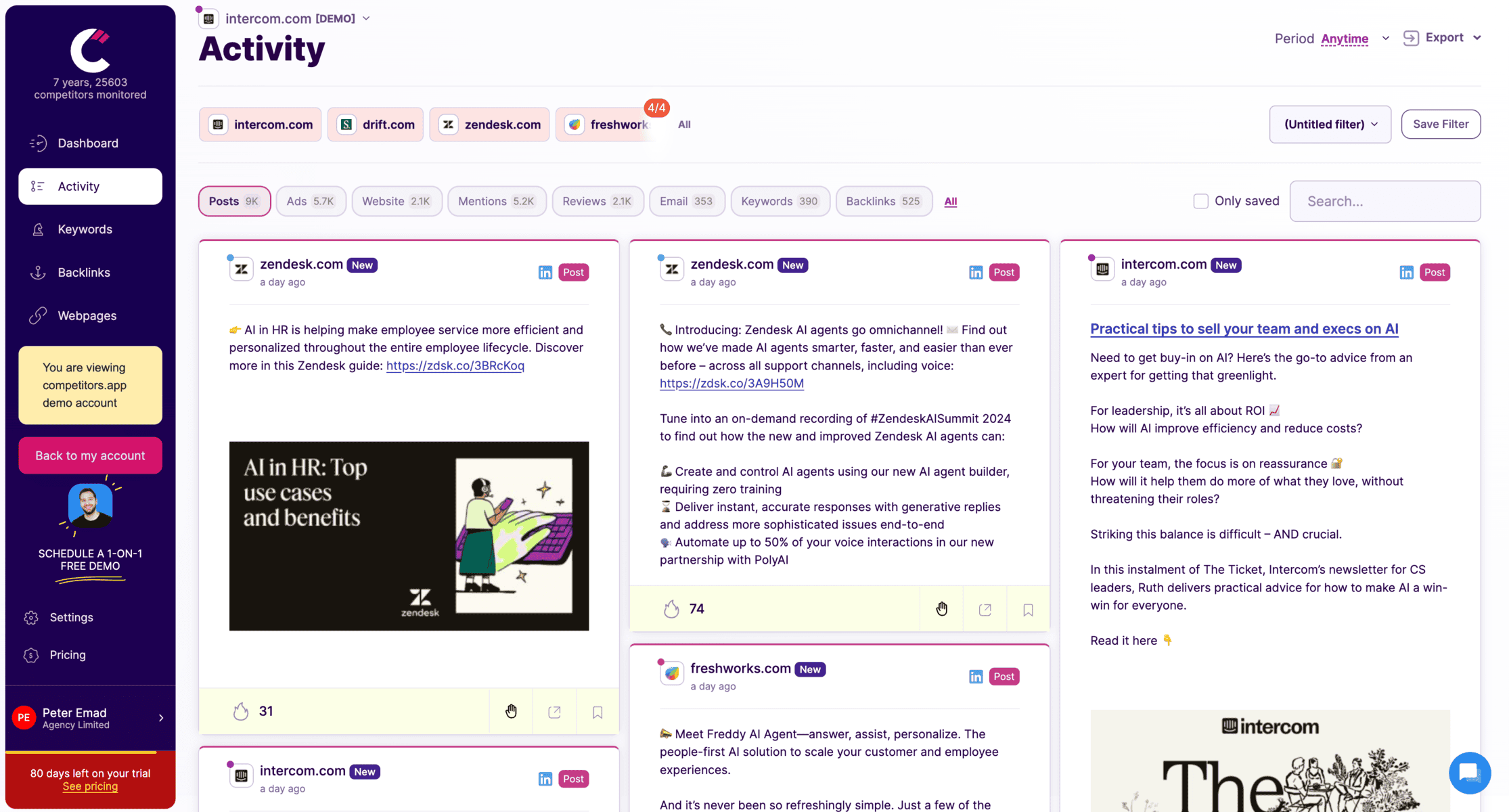
Tracks competitor social media updates across LinkedIn, Facebook, Twitter, and more.
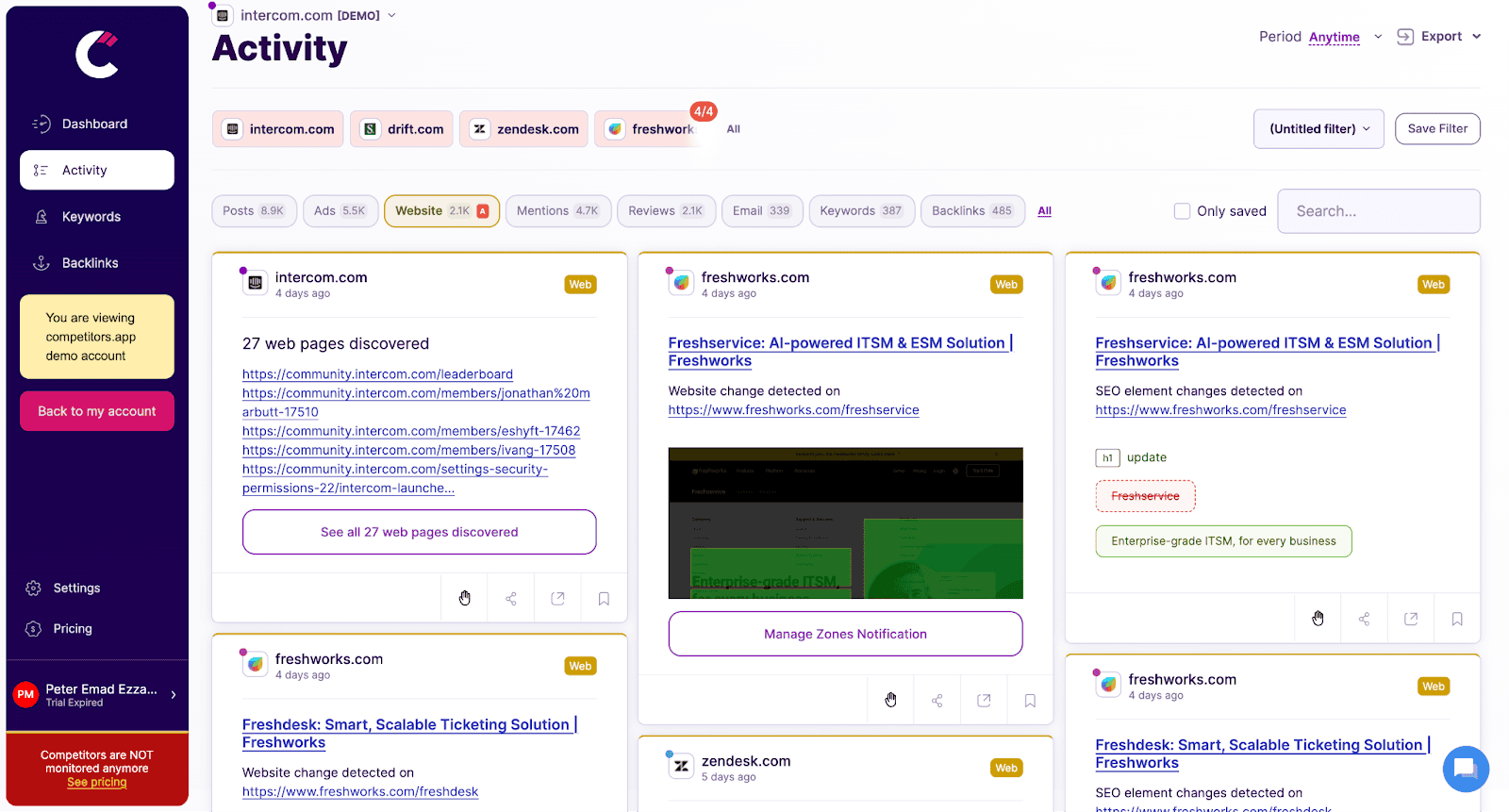
Monitors changes on competitors’ websites, such as product updates, pricing adjustments, and new messaging, providing instant alerts to help sales teams respond promptly.
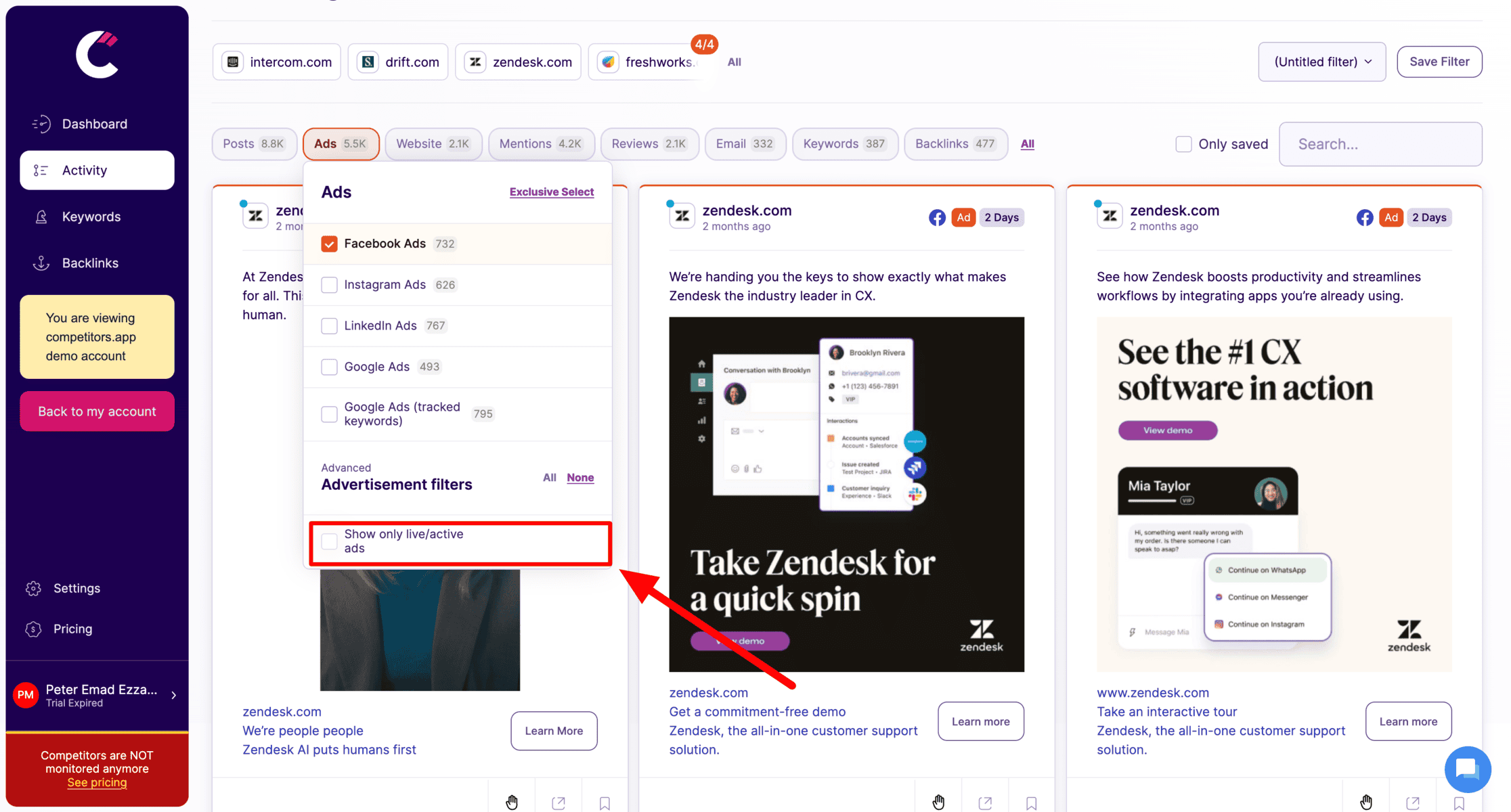
Tracks digital ad campaigns across platforms like Google Ads, Facebook, LinkedIn, and Instagram. It provides details on ad creatives, spending, and performance metrics, helping teams analyze successful ad strategies.

Analyzes competitors’ keyword strategies, organic rankings, and backlinks, allowing teams to refine their own SEO tactics and boost search visibility.

Tracks competitors’ email campaigns, including content, frequency, and engagement metrics, helping sales teams understand email tactics that drive engagement and conversions.
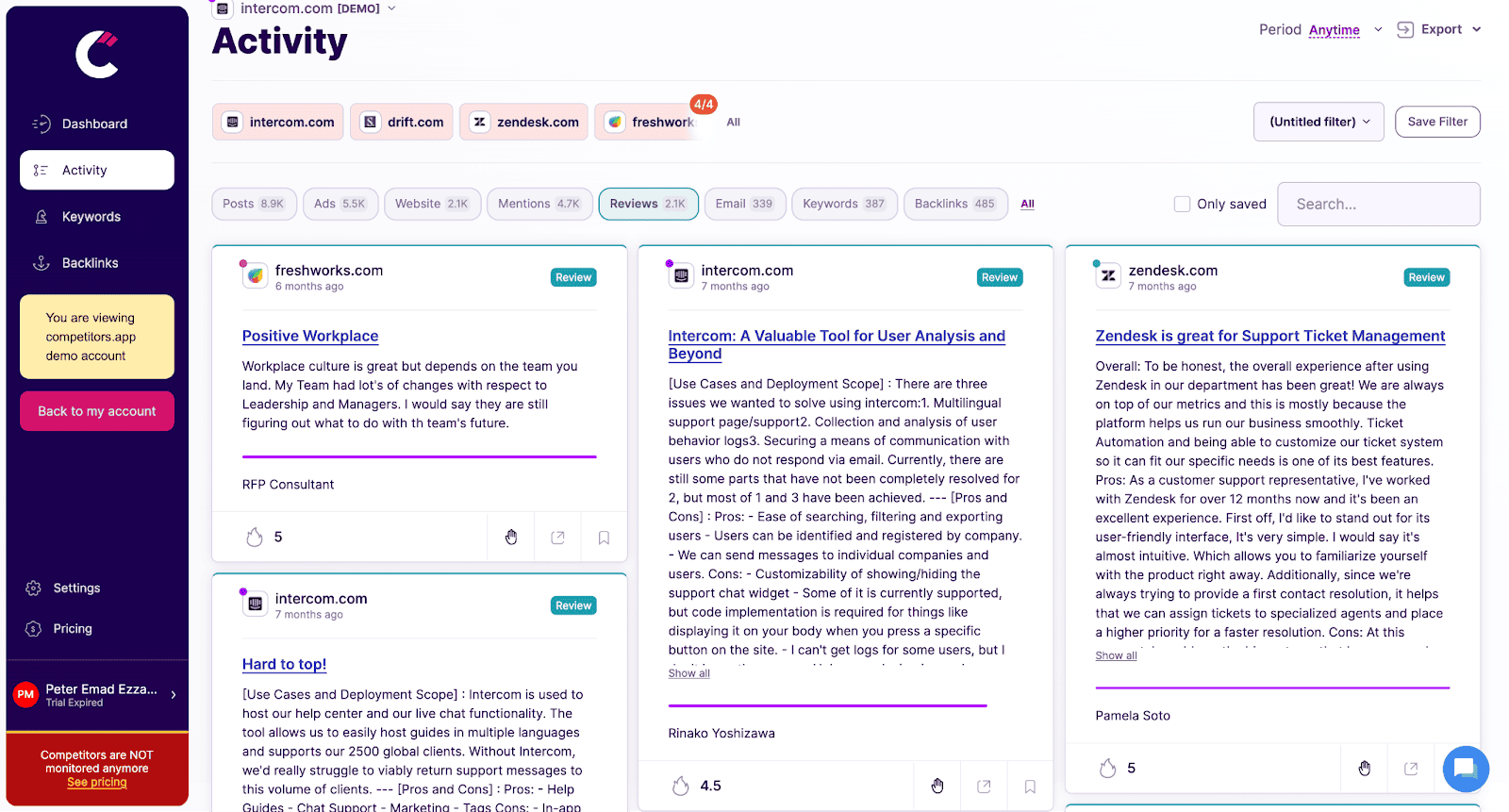
Analyzes customer reviews and ratings for competitors, providing insights into customer feedback, pain points, and product strengths, helping teams craft better sales pitches.
Semrush
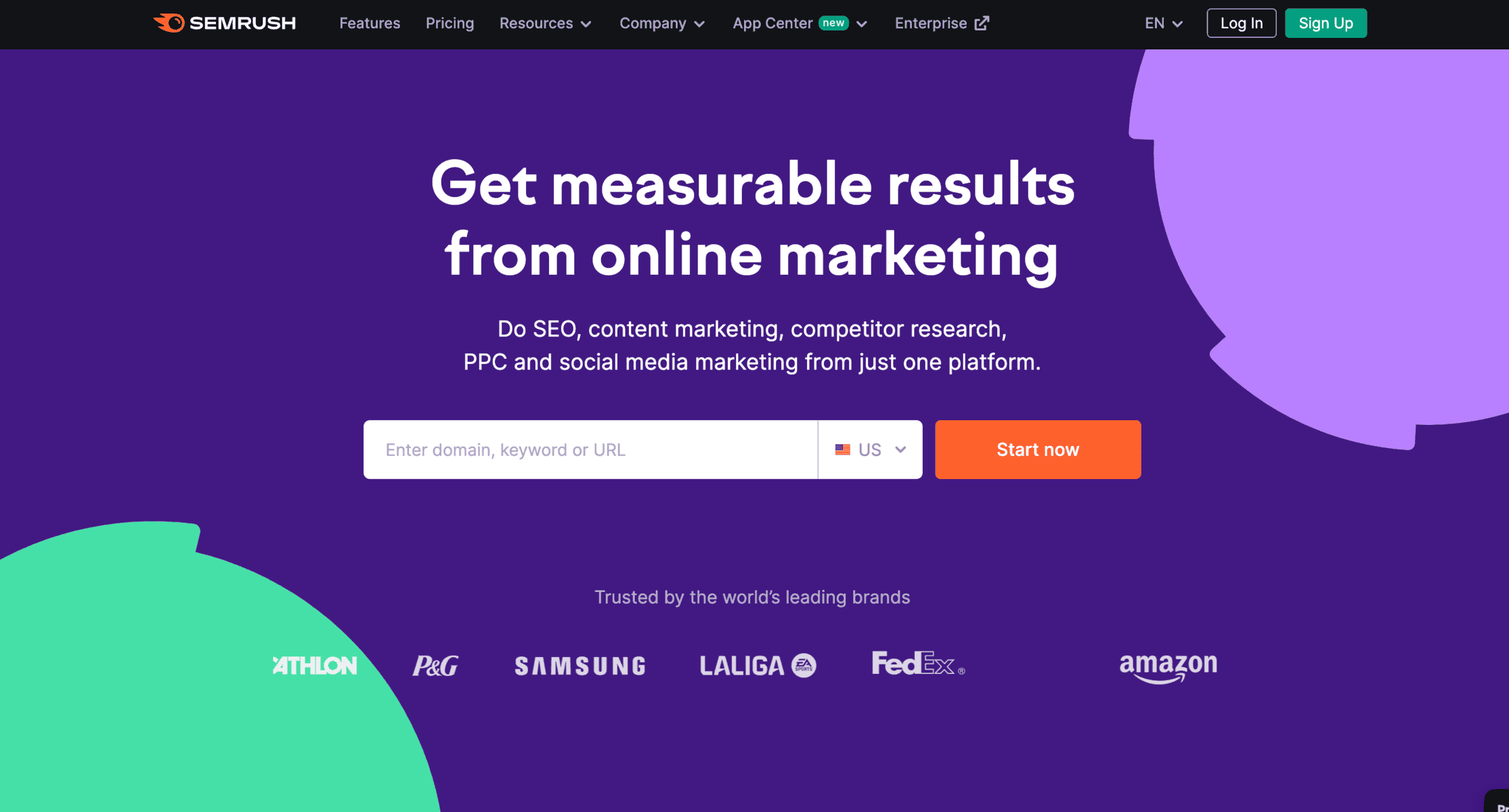
- Overview: Semrush is a comprehensive SEO tool that’s widely used for competitor analysis, keyword research, and traffic tracking. With its competitive research tools, you can analyze your competitors’ keywords, backlinks, and overall SEO strategy.
- Key Features:
- Competitive keyword research.
- Backlink analysis to track competitor link profiles.
- Domain comparison to evaluate how your site stacks up.
- Site audit to find SEO weaknesses.
- Advantages:
- Extensive data and reporting.
- Highly trusted by industry professionals.
- Versatile for all areas of SEO and digital marketing.
- Disadvantages:
- Pricing can be steep, especially for small businesses.
- The interface can feel cluttered and overwhelming.
- Price: Starts at $119.95/month, with a 7-day free trial available.
Ahrefs

- Overview: Ahrefs is known for its robust backlink analysis features and comprehensive SEO tools. It allows you to track your competitors’ backlinks and identify top-ranking pages.
- Key Features:
- Backlink analysis to see where competitors are getting their links.
- Site Explorer to analyze traffic and top-performing pages.
- Keyword research tool for competitive keyword insights.
- Rank tracking to monitor keyword performance.
- Advantages:
- Exceptional backlink analysis.
- Detailed and actionable data on competitor performance.
- Highly accurate, especially for backlink-related insights.
- Disadvantages:
- On the pricier side for small businesses.
- Limited keyword research for non-English markets.
- Price: Starts at $99/month, with a 7-day trial for $7.
Similarweb
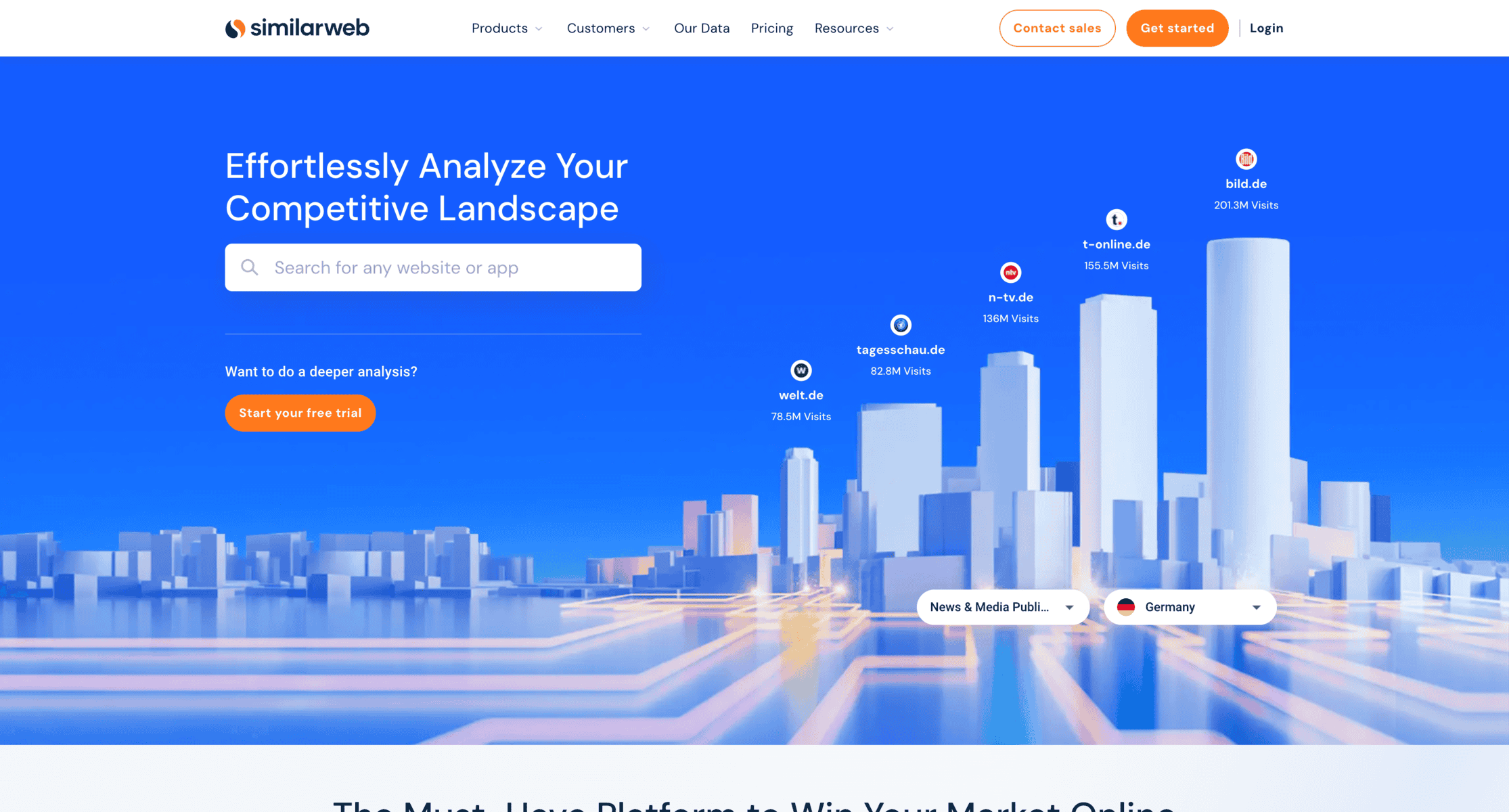
- Overview: Similarweb provides detailed traffic and engagement data for any website. It allows you to see where your competitors’ traffic is coming from, which can help you identify new referral opportunities and analyze traffic patterns.
- Key Features:
- Website traffic analysis with detailed sources of traffic.
- Industry benchmarks to compare competitors’ performance.
- Audience insights to understand your competitors’ customer base.
- Referral sources to identify where your competitors are getting their traffic.
- Advantages:
- Provides broad and highly reliable traffic data.
- Great for understanding overall digital strategy.
- Easy to use, with simple and clear reporting.
- Disadvantages:
- Limited data on smaller websites.
- Some features require higher-tier plans.
- Price: Starts at $199/month, with custom pricing for enterprise solutions.
Frequently Asked Questions About Stealing Traffic from Your Competitors
Is it legal and ethical to steal traffic from my competitors?
Yes, it’s absolutely legal to monitor and analyze your competitors’ strategies. In fact, most businesses engage in competitive analysis as a part of their regular marketing efforts. However, it’s crucial to stay within ethical boundaries. Instead of copying content or using questionable tactics like link buying, focus on improving upon what’s already out there. The key is to add value, offer a better user experience, and build upon existing strategies in a way that benefits your audience.
How can I find out which keywords my competitors are ranking for?
You can use tools like Competitors App, Semrush, and Ahrefs to find out which keywords your competitors are ranking for. These tools provide in-depth keyword research features that let you track the exact terms driving traffic to your competitors’ websites. By analyzing their top-performing keywords, you can identify opportunities to target the same audience and potentially outperform them.
Can I get in trouble for acquiring my competitors’ backlinks?
Acquiring backlinks from the same sources as your competitors is generally fine, as long as you’re not engaging in unethical practices like link farming or paying for links. Focus on creating high-quality content that naturally attracts backlinks, and aim to build relationships with other authoritative sites. If you’re providing valuable content, others will want to link to you, which helps you gain traffic without risking penalties.

